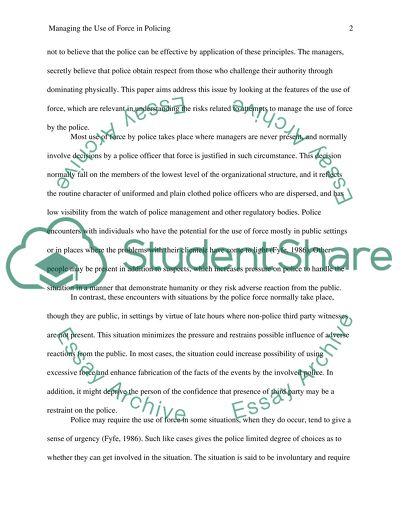Managing the use of Force in Policing Research Paper. Retrieved from https://studentshare.org/law/1476803-managing-the-use-of-force-in-policing
Managing the Use of Force in Policing Research Paper. https://studentshare.org/law/1476803-managing-the-use-of-force-in-policing.


